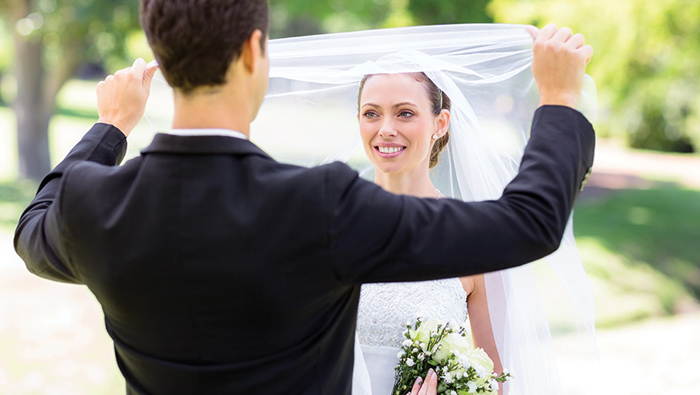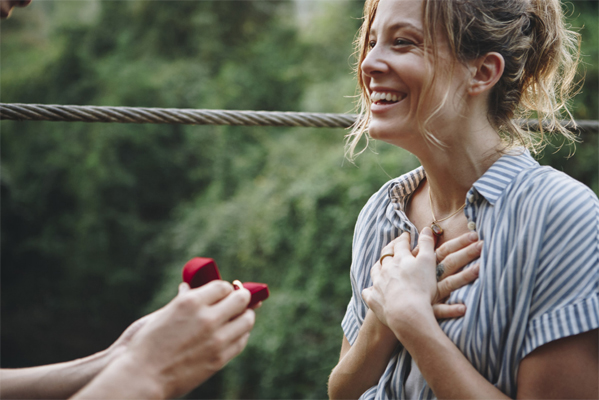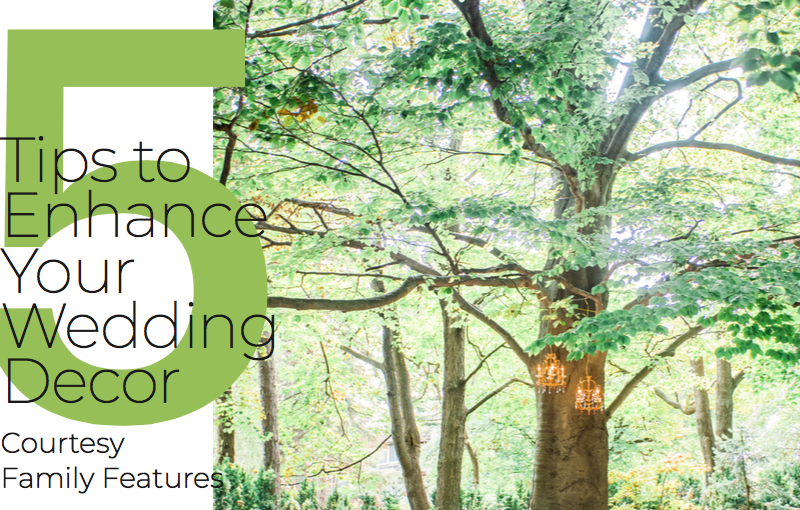The photographs on these pages show the key elements of a Jewish wedding with short explanations accompanying them.
The three essential elements of a wedding are the signing of the ketubah, the giving of the ring(s) and the yichud (seclusion). Under the chuppah, two ceremonies take place: Erusin (betrothal), also known as Kiddushin (sanctification), and Nissuin (the nuptials).
BEFORE THE CEREMONY
1. Kabbalat Panim –
Greeting the Bride and Groom
Usually separate receptions are held for the bride and groom as the guests arrive at the ceremony site. The bride is seated in a throne-like chair where friends and relatives may greet her. Meanwhile, at the groom’s reception, the guests listen to a d’var Torah by the groom, who is often interrupted by songs or jokes.
2. Ketubah – Marriage Contract
The ketubah, written in Aramaic, is the Jewish legal contract that states the rights, provisions and conditions of the marriage partnership. The contract becomes the bride’s property.
3. Bedeken – Veiling of the Bride
During the ceremony the bride wears a veil. The groom approaches the bride, looks into her eyes and lowers the veil. By doing so he makes sure that he has the right bride, unlike Jacob, who married Leah first instead of Rachel.
THE CEREMONY
4. Chuppah – Wedding Canopy
The wedding canopy is a multifaceted symbol: it is a home, a garment and a reminder of the tents of nomadic ancestors. Stepping under the chuppah, the bride and groom enter their new home, established in the presence of God.
5. Hakafot – Circling
Before the bride takes her position next to the groom, she may circle him either three or seven times. This ancient custom symbolizes the couple making an invisible wall of protection around themselves.
6. Erusin – Betrothal
The rabbi recites the blessing over the wine and then the betrothal blessing, Birkat Erusin. Drinking from the same glass indicates that the bride and groom are ready to begin a life of sharing.
7. Tabba’at – The Ring Ceremony
The giving of the ring is the central legal element of the betrothal ceremony. In the presence of the witnesses, the groom recites the Harei At, the public proclamation of this union. Tradition stipulates that the rings be simple, unbroken bands without precious stones, symbolizing that rich and poor are alike in love and marriage. The rings are placed on each other’s right index finger, making it easy for witnesses to see this legal aspect of the ceremony.
8. K’riat HaKetubah – Reading of the Ketubah
The bride’s acceptance of her ring marks the end of the betrothal ceremony. At this natural break between Kiddushin and Nissuin, the ketubah is read aloud and then given to the bride to keep.
NISSUIN – NUPTIALS
9. Sheva B’rachot
Each blessing has its own significance: the first is for the wine; the second is in honor of the wedding guests; the third celebrates the creation of humankind; the fourth, fifth and sixth bless the couple’s marriage; finally, the seventh is in honor of Israel and the wedding couple. These blessings are recited over the second cup of wine, after which both groom and bride drink.
10. Shattering the Glass
The groom breaks a glass placed under his foot at the end of the ceremony. The most well-known interpretation is that it represents the destruction of the Temple. This reminds us that even at times of greatest joy and happiness, we should not forget the suffering of our people – past and present. At the sound of the broken glass, family and guests call out words of congratulations and “Mazal Tov” (good luck).
11. Siman Tov u’Mazal Tov
Couple exits under tallit canopy. A common song at Jewish weddings, “Siman Tov u’Mazal Tov” is a musical way of wishing the couple well. “Siman Tov” means a good sign. “Mazal Tov” means good fortune.
AFTER THE CEREMONY
12. Yichud – Seclusion
This is the formal seclusion of the bride and groom. A few moments of quiet time are spent together as they break bread as husband and wife.
13. Se’udah – Festive Meal and Celebration
Upon the couple’s return from yichud, family and friends join together in dance, songs and a festive meal.






